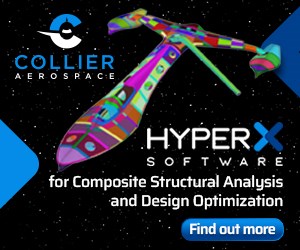Computer vision extensometer launched
Point Semantics Corporation, a 2015 startup commercializing technology licensed from the U.S. Naval Research Laboratory, recently released its MVE-100 High Performance Machine Vision Extensometer for composites testing.
Point Semantics Corporation (PSC, Silver Spring, MD, US), a 2015 startup commercializing technology licensed from the U.S. Naval Research Laboratory (US-NRL, Washington, DC, US), recently announced its entry into the structural materials testing marketplace with the release of its first product. The company’s MVE-100 High Performance Machine Vision Extensometer is meant for measuring elongation, strain and crack opening displacement during testing of metal alloys, plastics, composites, elastomers, and other materials.
"Advanced computer vision is revolutionizing so many industries right now and combined with sophisticated processing is producing breakthroughs in strain metrology,” says company CEO, Chris Vizas. "PSC’s technology is going to be a materials testing game changer, enabling tests that previously weren’t possible.”
The MVE-100 is priced competitively with conventional contact extensometers, but offers distinct advantages, beyond being non-contacting, including reportedly higher accuracy, precision, and efficiency for a wide range of strain rates. It provides 6 analog inputs and 4 outputs, strobing for controlling external devices, and internal and external triggering capabilities. Additionally, it measures the total as well as the horizontal and vertical components of elongation between two arbitrary points. PSC’s extensometer comes with everything needed to capture the data and export the results, including an integrated computer processor and control unit, digital camera and lens optimized for the user application, LED lighting source, support fixtures, tripod, and shock-absorbing storage case. Testing set up is quick and only requires that the user marks two dots on the surface of the specimen or other deforming component and points the camera and a lighting source at it.
PSC’s trademarked Ariston-EX software is then used to capture and display extension or strain or crack opening displacement histories as a function of loading as well as stress-strain curves (when load-cell data are acquired through the analog input interface) in real time. The MVE-100 is currently being evaluated under the ASTM E83 and ISO 9513 calibration standards.
Related Content
-
Composite sidewall cover expands options for fire-safe rail components
R&D project by CG Rail explores use of carbon fiber-reinforced thermoplastics and recycled manufacturing scrap to meet fire safety, weight and volume targets.
-
The basics of composite drawing interpretation
Knowing the fundamentals for reading drawings — including master ply tables, ply definition diagrams and more — lays a foundation for proper composite design evaluation.
-
3D-printed CFRP tools for serial production of composite landing flaps
GKN Aerospace Munich and CEAD develop printed tooling with short and continuous fiber that reduces cost and increases sustainability for composites production.













